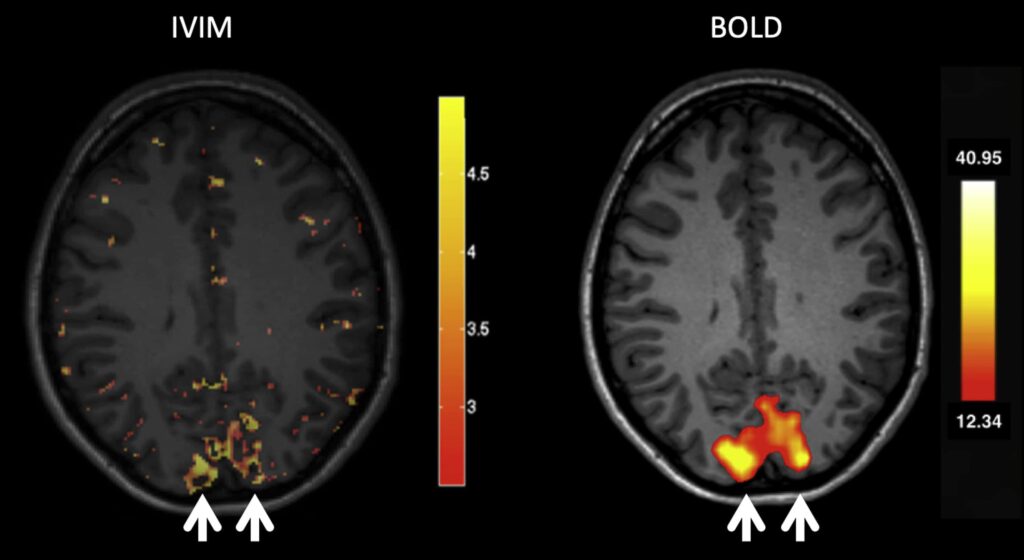In today’s rapidly evolving healthcare landscape, understanding the cost structures of medical services is more important than ever. One such emerging medical service is IVIM health, which refers to Intravoxel Incoherent Motion imaging, a sophisticated medical imaging technique. This technology offers a non-invasive way to assess microcirculation within tissues, making it an important tool in diagnosing and monitoring certain conditions.
In this article, we’ll break down IVIM health costs, explore the factors affecting those costs, and provide insights into what patients can expect when opting for this advanced imaging service.
What is IVIM Health?
IVIM (Intravoxel Incoherent Motion) is a specialized MRI technique that helps to measure both tissue diffusion and microvascular perfusion. It is especially useful in areas such as oncology, liver disease assessments, and other diagnostic procedures where traditional imaging techniques might fall short. This method gives clinicians a more detailed insight into what’s happening at the cellular level.
Why is IVIM Health Imaging Important?

IVIM imaging plays a critical role in diagnosing and treating complex health conditions. By offering clearer insights into tissue health and microcirculation, it helps medical professionals to diagnose diseases more accurately, track progression, and tailor treatments accordingly. It is particularly beneficial in oncology for tumor characterization, as well as in evaluating liver function and other organ-specific conditions.
Factors Affecting IVIM Health Costs:
The cost of IVIM health imaging varies depending on several factors:
1. Geographic Location:
The cost of healthcare services, including IVIM imaging, can vary widely based on location. Larger cities with cutting-edge medical facilities might charge more due to higher operational costs, whereas smaller towns or rural areas might offer lower prices.
2. Facility Type:
The type of facility providing IVIM imaging also impacts the cost. Hospitals, private clinics, and specialized imaging centers may all have different pricing models based on their equipment, expertise, and overall service offerings.
3. Insurance Coverage:
Your health insurance plan plays a significant role in determining how much you’ll pay out-of-pocket for IVIM imaging. While some insurance plans cover advanced imaging services, others might not, or they may require significant copays or deductibles. Always check with your provider to understand what is covered under your plan.
4. Technological Advancements:
As IVIM technology continues to evolve, newer machines and more accurate imaging capabilities could lead to higher costs. Facilities investing in the latest IVIM equipment may charge more to cover their investment in state-of-the-art technology.
5. Diagnostic Purpose:
The reason for the imaging test-whether it’s for initial diagnosis, monitoring treatment progress, or follow-up testing-can also affect the price. More complex diagnostic purposes often require more detailed scans, which might come at a premium.
Average Cost of IVIM Health Imaging in the USA:
The cost of IVIM health imaging in the USA can range from $500 to over $5,000, depending on the factors mentioned above. On average, patients without insurance may pay around $1,500 for a single IVIM scan. For those with insurance, the out-of-pocket cost may vary depending on co-pays, deductibles, and coverage limitations.
Comparing IVIM Imaging Costs to Traditional MRI:
IVIM imaging is typically more expensive than traditional MRI scans due to its advanced capabilities and the specialized expertise required to interpret the results. While a standard MRI may cost anywhere from $400 to $3,500, IVIM imaging’s additional features make it a more premium service.
Is IVIM Health Worth the Cost?
While the cost of IVIM imaging can be higher than traditional imaging methods, its benefits often outweigh the expense, especially for complex medical conditions. The precision and detailed insights provided by IVIM scans can lead to earlier detection of diseases, more accurate diagnoses, and more effective treatment plans. This not only improves patient outcomes but can also potentially reduce long-term healthcare costs by preventing complications.
Tips for Reducing IVIM Health Costs:

- Shop Around: Not all facilities charge the same for IVIM imaging. Check prices at various hospitals and imaging centers in your area to find the most affordable option.
- Check Your Insurance Coverage: Before scheduling your IVIM scan, verify with your insurance provider whether the service is covered and what your out-of-pocket expenses might be.
- Look for Financial Assistance Programs: Some hospitals and clinics offer financial assistance programs for patients who cannot afford the full cost of imaging services.
- Opt for Payment Plans: If you don’t have insurance or the costs are still too high, many facilities offer payment plans that allow you to pay for your scan over time.
Future of IVIM Health and Cost Trends:
As IVIM technology continues to evolve, we can expect both the demand and cost for this imaging service to change. While newer, more advanced machines may drive up initial costs, increasing availability and competition in the market may eventually lead to more affordable pricing options for patients. Additionally, as more insurers recognize the value of IVIM imaging in preventive healthcare, coverage for these services may expand.
FAQ’s:
1. What is IVIM imaging used for?
IVIM imaging is primarily used for diagnosing and monitoring diseases like cancer and liver conditions by providing detailed insights into tissue microcirculation and diffusion at a cellular level.
2. How does IVIM imaging differ from regular MRI?
Unlike regular MRI, IVIM imaging measures both tissue diffusion and blood flow, offering more precise information about the microenvironment of tissues, which is crucial for conditions like cancer.
3. Is IVIM imaging covered by insurance?
Coverage for IVIM imaging depends on your insurance plan. Some plans may cover it, while others may require co-pays or deductibles. It’s important to check with your provider before scheduling a scan.
4. How much does IVIM health imaging cost?
On average, IVIM imaging can cost between $500 and $5,000 depending on the facility, location, and your insurance coverage.
5. Can IVIM imaging be used for all patients?
IVIM imaging is typically safe for most patients, but certain conditions, such as having metallic implants, may prevent some individuals from undergoing the procedure.
6. Are there risks associated with IVIM imaging?
IVIM imaging is generally considered safe, as it uses magnetic fields rather than radiation. However, as with all MRI procedures, patients with metal implants or severe claustrophobia may face risks or discomfort.
7. How long does an IVIM scan take?
An IVIM scan usually takes about 30 to 60 minutes, depending on the area being examined and the complexity of the case.
8. Is IVIM imaging available everywhere?
IVIM imaging is still a relatively specialized service and may not be available in all hospitals or imaging centers, especially in rural areas.
9. Can IVIM imaging detect cancer early?
Yes, IVIM imaging can provide detailed insights into tumor characteristics and microcirculation, which can help in the early detection and monitoring of cancerous growths.
10. What should I expect during an IVIM scan?
During an IVIM scan, you’ll be required to remain still inside an MRI machine while images are taken. The procedure is painless, though some patients may experience mild discomfort from lying still for an extended period.
Closing Remarks:
IVIM health imaging represents a significant advancement in medical technology, offering unparalleled insights into tissue health and disease progression. While the cost of this service can be higher than traditional imaging methods, its benefits in terms of diagnostic accuracy and patient outcomes are undeniable. For patients navigating the healthcare system, understanding the factors influencing IVIM health costs, along with strategies for reducing out-of-pocket expenses, is essential for making informed decisions.